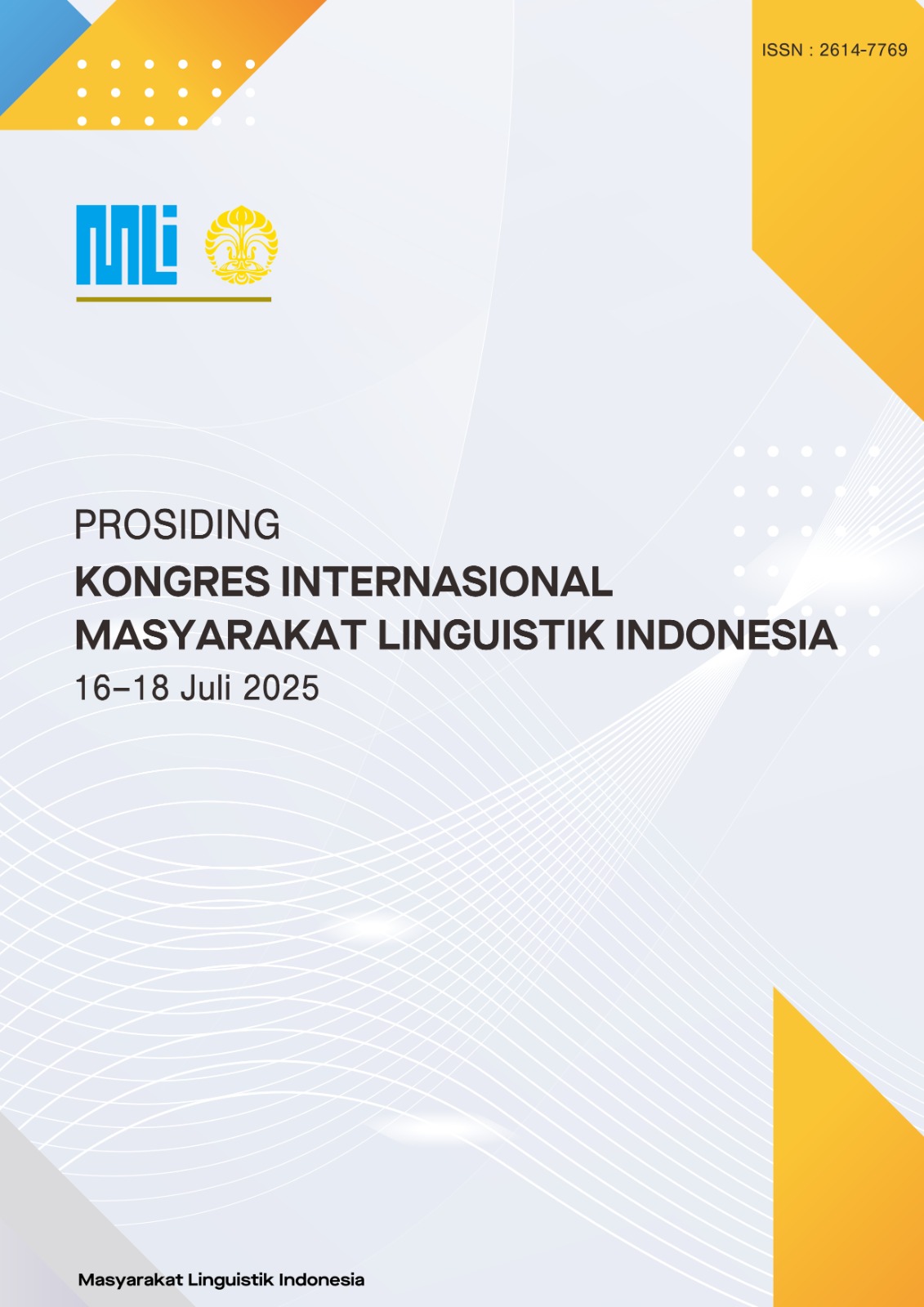A CORPUS SEMANTIC STUDY OF THE TERM 'LAJU' VARIATIONS IN PALEMBANGNESE
Keywords:
Corpus, linguistic-variations, Palembangnese, semanticsAbstract
ABSTRACT
This study employs a semantic corpus to investigate the linguistic patterns of the term "laju" in the Palembangnese. The main objective is to identify and analyze the varied meanings and contextual uses of "laju," emphasizing its syntactic patterns and cultural significance in Palembangnese. The study uses WhatsApp text data of the daily written Palembangnese communication compiled into a corpus comprising 1.406.134 tokens. The semantic corpus analysis focuses on "laju" concordances involving the word frequency and its collocations to understand how the word functions in the Palembangnese interactions. The study highlights the multifaceted nature of "laju" and its adaptability across different linguistic and cultural contexts by identifying the concordances. The findings reveal that recurring collocates of "laju" include “dak" (no), "gek" (later), "nak" (want/will), "aku" (I), "nah" (particle/affirmative), “dio” (she/he), “ngapo” (why), “nian” (really/very), “ke” (to - preposition of direction), and “kan” (emphasis particle or question marker); and imply a wide range of “laju” meanings in Palembangnese, like cause-effect marker, permission, comparison/similarity, excessive behavior, and even the meanings 'to go' or 'to die'. The findings also provide scientific evidence that although "laju" is identical orthoplogically in Indonesian, it differs from Palembangnese use. It shows that cultural expression contributes to the complexity of word meanings.
Downloads
Published
How to Cite
Issue
Section
License
Copyright (c) 2025 Yenny Karlina

This work is licensed under a Creative Commons Attribution-NoDerivatives 4.0 International License.


